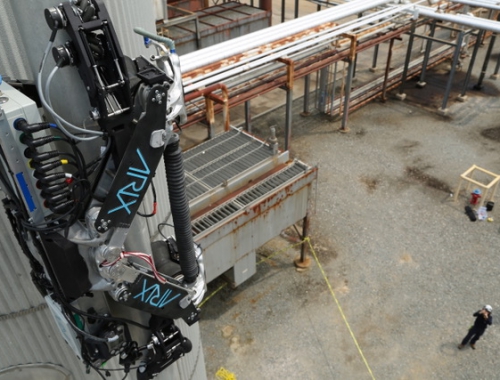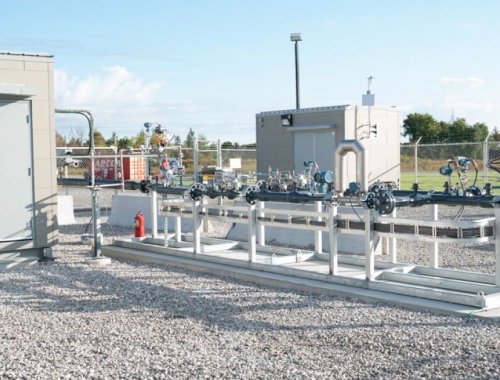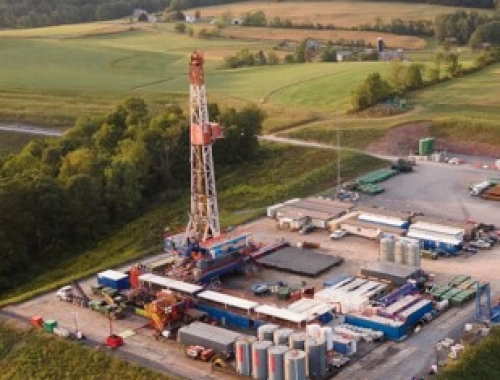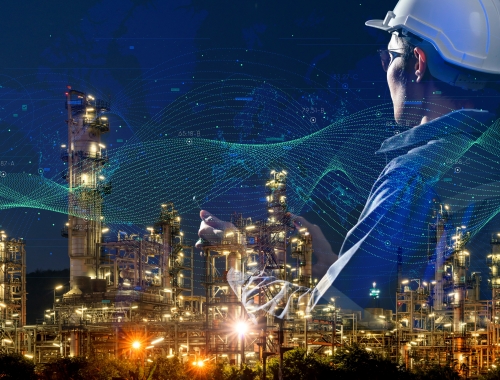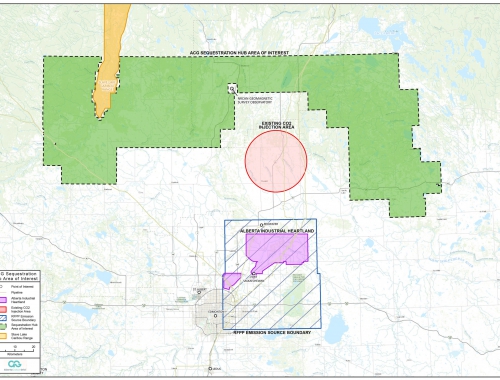Managing methane
SUMMARY
Led by major producers in the US and Canada, the global gas industry is ramping up its methane detection and mitigation efforts.
By Dale LunanPOSTED IN:
The global natural gas industry continues to make advances in reducing its methane emissions, spurred on by innovation to improve technology, reduce waste and be ahead of regulatory requirements.
The International Gas Union’s International Gas Research Conference (IGRC2024) in Banff in May 2024 will be a venue to showcase and exchange leading practices in detecting, measuring, documenting and reducing methane emissions.
Reducing methane emissions represents one of the most practical and significant areas for action by the industry to improve efficiencies and lower emissions. It is consistent not only with the gas industry’s long-standing commitment to safety but to the commercial success of the sector – methane is a significant component of what it sells, and letting it escape to the atmosphere represents a financial loss.
In 2022, methane emissions associated with the global natural gas sector fell by 1.3%, according to International Energy Agency (IEA) data, outstripping a global decline in production of 0.2%.
But the industry isn’t resting on those laurels and is actively committing to reducing methane emissions under several global platforms, including the Global Methane Pledge, the UN’s Oil and Gas Methane Partnership (OGMP) 2.0, and the Aiming for Zero initiative of the Oil and Gas Climate Initiative (OGCI), which has set a goal for signatories to reach near zero methane emissions from their operated oil and gas assets by 2030.
At the same time, the OGCI’s Climate Investment (CI) fund, backed by some of the world's largest oil and gas companies, has supported innovations that have cut greenhouse gas emissions by 30mn tonnes in the five years since the initiative’s conception.
In Canada, the province of Alberta – home to the majority of Canada’s natural gas production – has reduced methane emissions from its oil and gas sector by 44% from 2014 levels and expects to easily meet its target of a 45% reduction by 2025.
The Canadian Gas Association’s (CGA) members – the natural gas distribution and transmission industry – work continuously to minimise environmental impacts throughout the entire pipeline value chain. The sector has been actively engaged in understanding, managing and reducing methane emissions for several decades, including many initiatives through the Canadian Energy Partnership for Environmental Innovation (CEPEI) a program affiliated with CGA. According to CEPEI’s latest annual GHG emissions inventory for the 2021 reporting year, the total methane emissions from the natural gas transmission, distribution and storage sector are already 35% lower than in 2012.
Newer, better sensor technology
Enabling these improvements in detecting and eliminating methane emissions is a vastly improved sensor technology that is being deployed in a variety of applications.
US-based SeekOps is establishing a global customer base for its methane sensor technology, which independent assessments show can detect 100% of leaks at oil and gas facilities without producing any false positives.
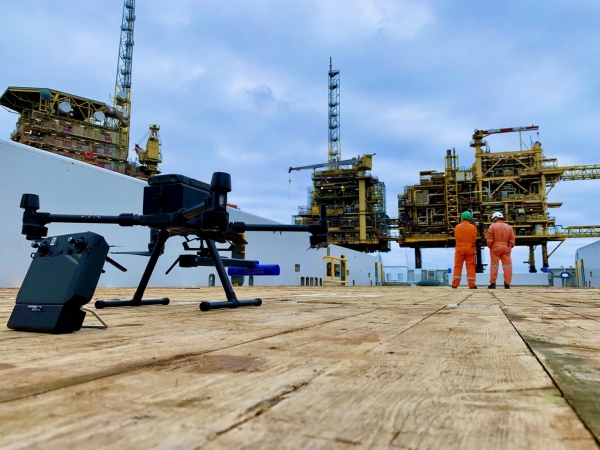
[Image credit: SeekOps]
SeekOps fits its lightweight SeekIR sensors on unmanned aerial systems (UASs) that both transmit first-look data to operators in real-time and provide detailed quantification. In trials carried out in 2019, the sensor managed to detect 100% of leaks with no false positives.
Montrose Environmental Group is deploying its Sensible Environmental Data Platform (Sensible EDP™), a cloud-based suite of data technologies to detect, locate and address methane emissions. And earlier this year, it added infra-red camera technology developed by Canada’s Kuva Systems to improve the performance of the Sensible EDP™ by offering the ability to identify intermittent large emission events.
Advances in satellite monitoring and measurement
Alongside improvements in sensor technologies is the growing deployment of satellites to monitor and measure methane emissions globally, with France’s Kayrros and Canada’s GHGSat emerging as leaders in the field.
Kayrros has been selected by the United Nations Environment Programme to gather global data for its International Methane Emissions Observatory (IMEO) initiative, which was launched at the G20 Summit in 2021.
IMEO’s aim is to transform conventional approaches to methane reduction by combining verified third-party data – in this case supplied by Kayrros from its constellation of methane monitoring satellites – with action on research, reporting and implementation.
Montreal-based GHGSat, meanwhile, has a constellation of nine emissions-detecting satellites now in orbit, including three micro-satellites specifically designed to detect and measure methane emissions from sources that are 100 times smaller than those identified by other satellites. Three more satellites are scheduled to be launched later this year, with another four in the queue for 2024.
Through GHGSat’s SPECTRA intelligence platform, subscribers can access all methane emissions data across regions and countries over a sixth-month period, providing energy producers and operators “with crucial information in order to drive decisive and impactful action on methane emissions.”
Improved remote land and air detection
Emission detection is also improving closer to the ground, with fixed and remote technologies being deployed on drones and aircraft and from balloons, allowing the industry a far clearer picture of where its emissions are coming from and how those emissions can be mitigated.
French major TotalEnergies has implemented a global methane emissions quantification programme that uses sensors attached to drones to measure methane levels from a variety of industrial facilities.
The drones collect sensor measurements from both onshore and offshore industrial facilities. TotalEnergies’ data analysis team then fuse the sensor readings with measurements taken using traditional surveying techniques, like infrared cameras, ground sensors and satellites.
In the UK, BP has invested in Flylogix, a developer of methane-detecting drones that can fly as close as 250 metres to North Sea oil and gas installations and collect emissions data using sensor technology developed by SeekOps.
And US major Chevron has ordered federally-approved Scout Systems drones from Ondas Holdings and American Robotics to support its methane monitoring programmes.
American Robotics is a leading developer of automated commercial drone systems and is the first company approved by the US Federal Aviation Administration (FAA) to operate multiple drones beyond-visual-line-of-sight without a human operator on-site.
In the US, ExxonMobil is using the methane monitoring company Scepter to deploy methane-detection sensors on stratospheric balloons, with the first units set to monitor emissions over the major’s Permian Basin operations.
The balloons will carry hyperspectral sensors operating in short-wave infrared capable of detecting and measuring emissions down to 50 kg/hour of methane and lower, which equates to a moderate-sized industrial leak. The balloons can also remain stationary over long periods, detecting intermittent leaks that are often missed by fly-by drones, aircraft or satellites.
Other Permian operators, including Pioneer Natural Resources, Chevron and Occidental, are also considering similar programmes.
Vehicle mounted detection
While industry is turning to air-borne detection technology to scan for emissions over a wide area, it still relies on ground-based monitoring to close in on smaller leaks.
In California, Pacific Gas and Electric (PG&E) is using new and more precise leak detection technology to survey its 1.2mn customer service lines, gas meters and distribution pipelines.
PG&E has accelerated its leak inspection programme to repeat every three years – a greater frequency than the currently mandated five-year cycle. The company also surveys its entire high-pressure transmission pipeline system twice per year.
The company’s survey programme covers an extended 42,000-mile distribution system and will employ mobile patrols with vehicle mounted, highly sensitive technology that measures methane plumes in the air, maps the location, and prioritises the leak by its grade within PG&E’s system.
Advanced hand-held methane detection devices will be used on foot patrols and repairs will be prioritised for the highest emitting leaks.
In the Appalachian Basin – source of about half of all US natural gas production – Diversified Energy has expanded methane emissions detection at its operations by deploying an extra 500 handheld detection devices at its work sites.
The move comes after Diversified introduced 100 devices at its Appalachian fields under a pilot project. The devices proved effective in identifying small emissions that could be eliminated at little-to-no incremental cost, Diversified said.
Reduction of methane emissions in gas infrastructure
Diversified is also among a growing cohort of producers in the US, Canada and around the world sharpening their focus on eliminating methane emissions at their production facilities. Besides deploying the handheld devices across its Appalachian operations, Diversified has turned to Montana-based Bridger Photonics to help it find methane leaks at its facilities.
Bridger specialises in using precision laser imaging, detection and ranging (LiDAR) equipment aerially to find methane escaping from oil and gas facilities. It estimates that its technology can detect more than 90% from production basin emissions.
An earlier trial along a section of Diversified pipeline in the Appalachian confirmed that the technology could detect emissions well below the 500 parts/million threshold set by the Environmental Protection Agency.
EQT, the largest natural gas producer in the US, recently completed a $28mn programme to eliminate all natural gas-powered pneumatic devices from its production operations.
Swapping out nearly 9,000 gas-actuated controllers with “fit-for-purpose” technology – primarily electric actuators and compressed air controllers – has reduced EQT’s methane emissions by 70% and reduced its environmental footprint by 305,614 metric tons of CO2-equivalent.
Canada’s Westgen Technologies has also developed a technology to help eliminate field level emissions. Its Engineered Power on Demand (EPOD) solution, tested extensively at NGIF’s Emissions Testing Centre in Alberta, uses solar energy to compress air to operate pneumatics, replacing the use of compressed natural gas to run those pneumatics and eliminating a significant source of field methane emissions.
In the Middle East, Baker Hughes is working with Egyptian General Petroleum Corp to reduce flaring-related methane emissions at the APC refinery in Alexandria in Egypt.
Deploying its flare.IQ technology, Baker Hughes will help EGPC digitalise its emissions management infrastructure and obtain critical information about its flaring systems, the US firm said. This will help in “substantially reducing emissions by ensuring a higher-efficiency flare combustion rate,” Baker Hughes says.
And in war-torn Ukraine, gas transmission operator GTSOU is striving to tackle gas leaks across its distribution grid through the use of innovative equipment and technologies.
GTSOU’s efforts started with compiling a database of every stop valve across Ukraine’s gas transmission system, which comprises 33,079 km of pipeline and 57 compressor stations.
The valve data was used to build a leak monitoring system, operated by GTSOU’s five mobile laboratory teams which use state-of-the-art equipment and portable leak detection meters to identify leaky valve units and quickly repair them.


